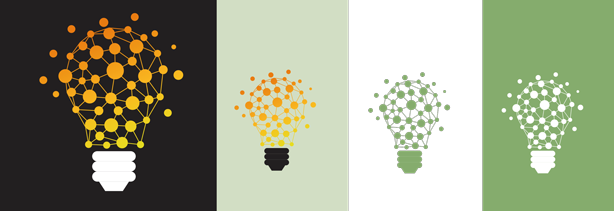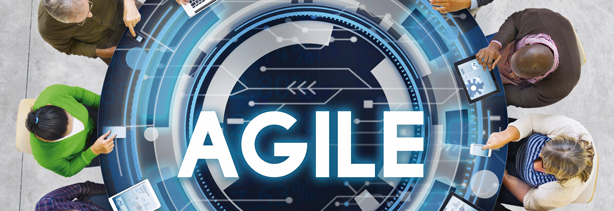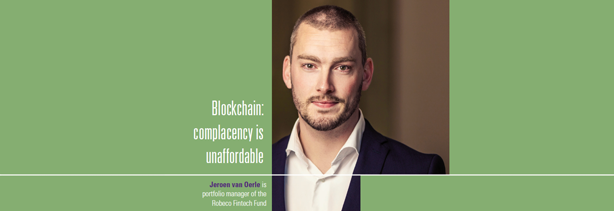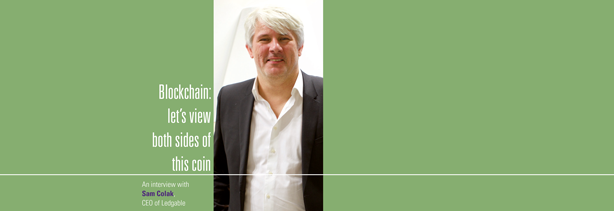
Smart Tech in the real estate industry is called PropTech, which includes technological innovations such as big data and data analytics, artificial intelligence, robotics and blockchain. PropTech has the potential to become the new industry standard and may be key in maintaining competitive advantage. However, investing in PropTech requires the industry to have a constant view on innovations.
A strategy to consider when investing in corporate innovation is to partner with innovative technology start-ups. Nowadays industry leaders are actively in search of how to implement PropTech solutions. However, competition may come from outside of the industry. This is illustrated by the vast amount of PropTech start-ups our country is launching. These start-ups are bringing ready to implement solutions in the area of smart cities, real estate investments and sustainability.
The industry should, apart from investing in technological innovation in real estate, also reassess its current business models and value propositions. Fully embracing PropTech requires a culture shift, an open innovation strategy and a workforce with additional skillsets. The industry is in need of leaders with courage and the curiosity to change the status quo.
Introduction
Smart Tech developments are on their way to change many industries, including the property industry. The property or real estate industry consists of real estate developers and builders, housing associations, real estate advisors, real estate investors, real estate financiers and corporates with a large real estate portfolio. Technological and digital innovations relating to property are called PropTech ([Pyle17]), thereby constituting the real estate alternative for Fin Tech. Other terms used as an alternative for PropTech are RealTech, CREtech, ConTech and RETech, often used interchangeably. Examples of technological innovations having an impact on real estate over the coming years include big data and data analytics, whereas artificial intelligence, robotics and blockchain may be of influence in the more distant future ([Pyle17]). The aforementioned innovations have the potential to become the new standard in many other industries as well, including the financial sector.
The difference between Smart Tech in industries other than real estate on the one hand and PropTech on the other is that the latter includes a physical (brick and mortar) aspect. Examples include innovations in manufacturing (3D printing), home appliances (Internet of Things), (smart) city infrastructure and mobility (driverless cars) and solutions to digitally visualize real estate without physically building it (Virtual Reality).
Maintaining a competitive advantage requires the real estate industry to have a constant view on innovations, not only within the limited scope of their own business, but also in adjacent industries. Whereas 92% of respondents in KPMG’s 2017 PropTech Survey [Pyle17] think digital and technological change will impact their business, only 34% acknowledges having an enterprise-wide digital strategy to seize the opportunities that arise. In KPMG’s 2017 technology industry innovation survey [Zann17], 54% of global respondents (mostly C-level) acknowledge that access to alliances and partnerships is a key factor to enable technology innovation.
There are several strategies to consider when investing in corporate innovation: building innovation internally, buying startups or partnering with innovative SmartTech companies. Helping the real estate industry to partner with innovative technology start-ups is what Holland ConTech & PropTech’s Wouter Truffino tries to achieve. He is interviewed by Paul Oligschläger, reflecting on Wouter’s vision and putting it in a broader research perspective.
The interview
What does real estate have to do with IT and Smart Tech solutions?
Wouter: Holland ConTech & PropTech started in May 2015, promoting IT and Smart Tech solutions within the Real Estate industry. We started building an ecosystem, because the construction and real estate sector has been lagging behind in implementing new technologies. At first, we put a lot of effort and energy into inspiring the industry and showing how other industries are changing by implementing technology into their current business models. Nowadays, the inspiration phase has given way to a phase in which boardrooms are in search of the next steps that need to be taken: the ‘why’ question has been replaced by the ‘how’ question. The next steps include engaging employees to start adapting and using technology, as well as figuring out how employees will need to work together with partners, such as start-ups.
Paul: As Wouter mentions, it has taken the real estate sector the past few years to acknowledge that the industry can benefit from Smart Tech. The real estate industry is considered to be quite traditional and can profit from innovation, i.e. in data analytics for mortgage management, predictive maintenance for large real estate portfolios or digitizing production processes. Much can be learned from other industries, such as the financial services industry or the technology industry. From these sectors we have learned that Smart Tech plays a crucial role in innovation.
Which current global developments do you find particularly interesting?
Wouter: The most important global development at this moment is the speed of development in Artificial Intelligence. Machine Learning and AI are likely to outpace the rate of improvement seen in transistor chips (following Moore’s Law), which has been the representation of technological progress for several decades. I think AI is the major development that everybody needs to pay attention to. An example is the start-up Octo, which uses data analytics and machine learning to improve decision-making in asset management. For housing corporations, this would mean that short-term savings can be made on maintenance and inspection costs.
Paul: KPMG has recently conducted a survey of over 300 real estate decision makers to get a better understanding of the adoption of PropTech in the sector. Only 15% of respondents in KPMG’s PropTech survey indicated that AI will have the biggest impact on real estate over the next 5 years. Currently, most leaders in the sector are focused on big data and data analytics (44%) and the Internet of Things (16%), leaving AI in third place. The observed focus on data may have to do with the opportunities spotted by real estate leaders, which are to be found in real-time asset performance data (30%) and customer data (23%) ([Pyle17]).
What companies or trends do you find particularly inspiring?
Wouter: I see a couple of inspiring developments at this moment. They originate from outside the Real Estate industry. The first one is Alphabet (Google). Alphabet’s company Sidewalk Labs is creating an entire smart city using Smart Tech in Toronto. The city itself is a completely new radical mixed-use community. The second example consists of two companies, Amazon and Alibaba. They are using cloud services to map city traffic and improve mobility. I think that these technologies force traditional real estate companies to reassess their current business models and value propositions in order to keep pace with the competition.
Traditional real estate companies are also moving towards innovation. There are some major development going on in the real estate industry itself, for example at two of the largest real estate consultancy firms worldwide: CBRE and Cushman & Wakefield. CBRE is creating a large fund to invest in all kinds of smart technologies and Cushman & Wakefield is working really hard on data innovation.
Paul: As is evident from the examples, innovation may come from another industry. KPMG’s PropTech survey [Pyle17] found that 89% of respondents agreed with the statement that traditional real estate organizations need to engage with PropTech companies in order to adapt to the changing global environment. In the real estate sector, professionals must be alerted that this innovation from outside the sector (so-called cross-industry innovation) may be a threat for their own companies. If industry leaders do not move fast, they might be caught up by new market entrants. These can both be established companies and start-ups specialized in Smart Tech solutions.
Could you elaborate on any inspirational Dutch Smart Tech examples?
Wouter: As mentioned earlier, many large companies are working on Smart Tech innovations. In the Netherlands many start-ups, scale-ups and large companies know they need to innovate, but they need help. Hence the need for ecosystems like Holland ConTech & PropTech, or advisory solutions that help companies to build their internal innovation capabilities, such as KPMG’s Innovation Factory.
In my opinion, a great example of a Smart Tech solution is one in which generative design tools are used to develop neighbourhoods. Generative design helps to create hundreds of design options that you could never fathom on your own, with just one click. In the Netherlands, real estate companies have started implementing this solution together with architects and Autodesk, the world’s largest software company for the construction sector. Another great example is a Dutch Real Estate company, the commercial real estate developer OVG, which is setting new barriers. They are evolving into a real estate developer using smart technology as a unique selling point (called Edge Technologies) within the real estate sector. OVG is the developer of the next generation of Smart Buildings like The Edge and The Boutique Office in Amsterdam.
Paul: Personally, I’m impressed by the vast number of start-ups our country is launching. Some of these are implementing solutions which are directly aimed at the real estate sector, while others are applicable in a broader sense. Examples of these (former) start-ups are Bloqhouse (tokenizing real estate securities issued by investment funds by making use of the blockchain) or Physee (transparent windows generating electricity). Every year we see new initiatives and startups arise, which is why we have been collecting them in our yearly Real Estate Innovations overview [Grün18]. What we see is that some of these startups look very promising, but turn out not to be viable. This may have to do with funding issues, an under-defined value proposition or simply being too far ahead of the market. However, some of the start-ups succeed and might gradually transform the industry. This is why it is crucial for the industry to keep investing in innovation.
Figure 1. Thematic overview of innovative PropTech companies ([Grün18]). [Click on the image for a larger image]
How can companies successfully embrace innovation in Smart Tech?
Wouter: It’s a culture shift, which requires additional skills. We interviewed several CEOs within the Dutch industry. Many of them stated a need to start working on social innovation, meaning smarter working, dynamic management and flexibility in the organization. Since the technology is already out there, it is all about scaling. Employees must embrace technology and should not be afraid to lose their jobs due to Smart Tech implementation. Technology will make work easier by doing repetitive work in a matter of seconds or by making data smart. This way, the future of work changes and shifts towards value-add activities. Successfully embracing innovation requires action, massive action, which is all about culture, mindset and positive energy.
Paul: Managers from real estate companies should understand the need to innovate. The real estate industry is in need of leaders with courage and the curiosity to change the status quo. This is hard in times of financial crises due to the lack of investment capital, but nearly as hard in times of economic prosperity due to the lack of skilled people. Moreover, as stated in the introduction, innovating is hard when a company lacks the skills to manage innovation. The shift towards Smart Tech requires tech savviness in a company’s workforce. Besides, firms fear what they don’t know ([Kali16]). When asked about nine innovating topics, including AI, Internet of Things and Robotics, the management of a broad set of companies from various sectors including the real estate industry answered that they did not plan to implement these emerging technologies ([Kali16]). The big question is: ‘What is the reason behind this attitude?’.
KPMG’s European innovation survey [Kali16] revealed that the most observed challenge across a mix of industries including real estate was the lack of people inside the organization who have the skillset to manage innovation. If we consider this laggard attitude on implementing new technologies with respect to Smart Tech solutions we can conclude the following: if an organization lacks the skills to master Smart Tech, then innovating in Smart Tech will not go beyond the stage of mere theoretical strategy design. I think real estate companies should permanently have an open attitude towards innovation, whether by means of putting innovation on the strategy agenda when reviewing their business plans or attending meetings that bring together innovative start-ups with established companies, as Holland ConTech & PropTech is doing. They should also use KPMG’s Innovation Factory’s Three Stage Challenge Approach (prepare, run, select, to accelerate success and return on investment in innovation) in order to build innovation internally. However, it all comes down to leadership leading innovation and understanding the importance of innovation in an industry that has the potential to thrive by making use of Smart Tech.
What do you consider to be the next step?
Wouter: Larger organizations must realize that they have an opportunity to scale technology within the market. They know the industry, understand how it changes and know its potential. If they have an open innovation strategy in which it is possible for all kinds of new solutions to leverage APIs, they can dominate the market by creating new business models by using technology. This would be an open model into which new start-ups, scale-ups and technology companies or new technologies can easily be incorporated. The winners of tomorrow will be corporate organizations that are able to create new business models based on technology and start scaling new business opportunities.
Paul: I think the first step in real estate will be to make real use of data-driven insights, specifically the application of predictive analytics. Different data sources such as sensor data (office occupancy, energy usage), rental contract data, specific property data and external data are currently already combined into interactive dashboards. These could be improved and enriched by analyzing large volumes of data, in order to predict when maintenance is likely to be necessary. This creates real insights and competitor advantage. This may seem obvious, but generally real estate companies could better leverage data, both still to be collected and data already collected. Apart from this, I think the real estate industry should take a close look at how other industries, such as the financial sector are innovating, and how to translate innovations and innovative ways of financing to the real estate industry.
Figure 2. Headline results of the KPMG Global PropTech Survey 2017 ([Pyle17]). [Click on the image for a larger image]
Bloqhouse
Bloqhouse is a Dutch-based startup founded in 2016 and makes use of peer-to-peer blockchain networks. Issuers of securities, such as real estate investment funds, use Bloqhouse’s software to tokenize the assets in a legally compliant manner. Investors owning a token can trade directly, transparently and securely with other investors. The investor administration is managed by a smart contract on the blockchain. A smart contract enforces a transparent and trustworthy registration of investors as well as legally binding transactions between investors. Bloqhouse also offers know-your-customer (KYC) and investor on-boarding modules.
References
[Grün18] Sander Grünewald, Paul Oligschläger and Sybren Geldof, Real Estate Innovations Overview, KPMG Real Estate Advisory, https://home.kpmg.com/nl/nl/home/insights/2018/05/real-estate-innovations-overview.html, 2018.
[Kali16] Jerzy Kalinowski et al, European Innovation Survey, KPMG, https://assets.kpmg.com/content/dam/kpmg/nl/pdf/2016/advisory/KPMG-European-Innovation-Survey.pdf, 2016.
[Pyle17] Andy Pyle, Sander Grünewald and Nick Wright, Bridging the gap. Global PropTech Survey, KPMG, https://assets.kpmg.com/content/dam/kpmg/uk/pdf/2017/11/proptech-bridging-the-gap.pdf, 2017.
[Zann17] Tim Zanni and Patricia Rios, The changing landscape of disruptive technologies, KPMG, https://assets.kpmg.com/content/dam/kpmg/tw/pdf/2017/04/changing-landscape-disruptive-tech-2017.pdf, 2017.
About the interviewee
Wouter Truffino has been named in ‘the top 10 International PropTech Influencers 2017’, one of the 50 Future Creators of the Netherlands, a High Potential in 2018 by leaders in Real Estate and is a welcome guest on the Dutch radio at BNR. Wouter started to build the first ecosystem in ConTech (Construction Technology) and PropTech (Property Technology) in the Netherlands in May 2015. Holland ConTech and PropTech were born.






































































